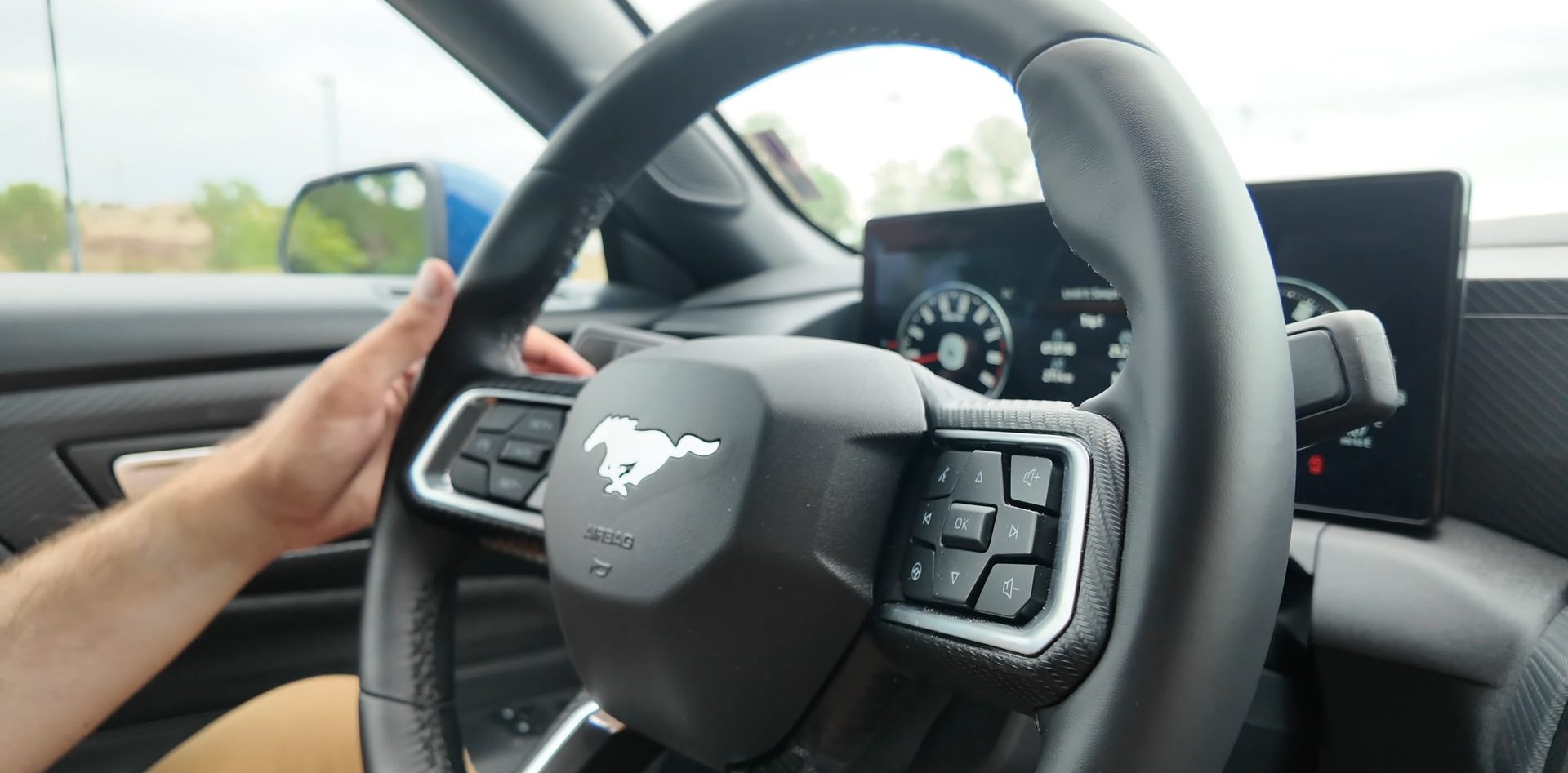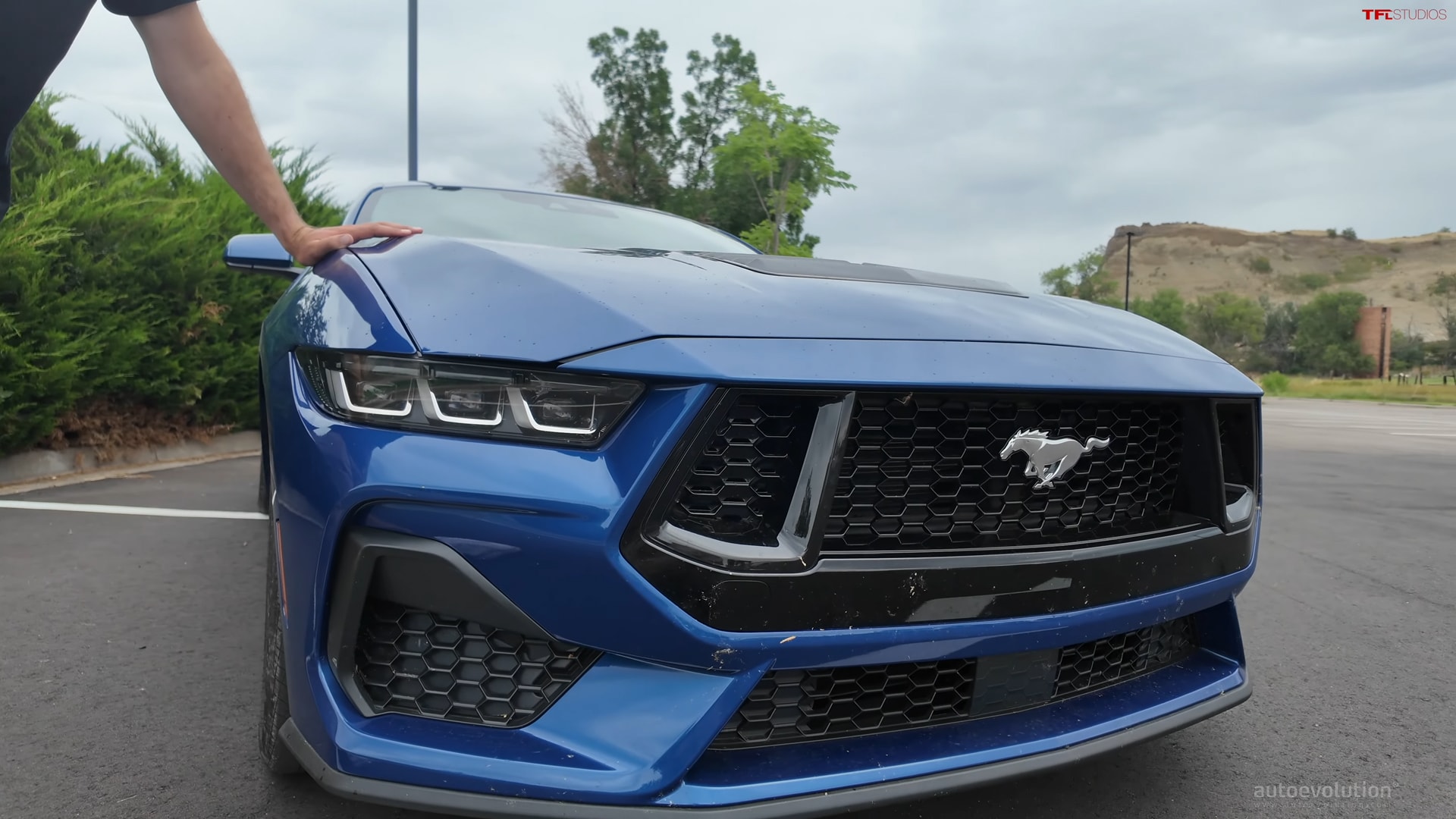After owning it for over six months, a popular automotive YouTube channel is parting ways with their 2024 Ford Mustang GT. The car, which has seen more drag races than most Mustangs will ever experience, is being sold back to the original dealer.
Despite its impressive performance, the drivers have decided it’s time for a change. Before they do, however, they’re sharing their insights after driving it over 4,000 miles. The channel, known for its in-depth reviews and performance testing, purchased the Mustang GT in January 2024.
They paid $42,000 for the car, which had only 15.4 miles on the odometer. At the time, the standard price tag was around $47,000. Given the current market conditions, a similar 2025 Mustang GT with the same specifications is estimated to have an MSRP of $49,345.

The channel’s decision to sell the Mustang GT comes after months of intense driving and testing. The car has been put through its paces on the drag strip, racetrack, and open road. The drivers have praised the car’s powerful 5.0-liter Coyote V8 engine, which produces 480 horsepower and 418 lb-ft of torque. The optional $1,225 Active Valve Performance Exhaust GT adds an additional six horsepower, bringing the total output to 486.
The $1,595 10-speed automatic gearbox has also been a standout feature, offering smooth shifts and quick acceleration. However, the channel has also noted some drawbacks to the Mustang GT. They have criticized the car’s interior quality, which they believe is below par for a vehicle in this price range. They have also expressed concerns about the car’s fuel economy, which is not particularly impressive for a sports car.
Despite these criticisms, the channel’s assessment of the Mustang GT is positive. They believe that it is a fun and capable sports car that offers excellent performance. However, they also acknowledge that it may not be the best choice for everyone. Those who are looking for a more practical or comfortable vehicle may want to consider other options. Despite its humble origins, the Ford sports car proved to be a formidable competitor on the racetrack, outperforming more modern rivals like the Volkswagen Golf R, Toyota GR Corolla, Honda Civic Type R, and even the futuristic BMW i8.
While the car’s soft suspension made it comfortable for long drives, it wasn’t as agile on winding roads. Inside, the digital displays were a divisive feature, with some preferring traditional analog gauges. Despite its relatively simple interior, the Premium package offered some upgrades, but it couldn’t compete with luxury vehicles like the Mercedes-Maybach SL 680.
The sports car’s storage space was adequate for a sports car, and the foldable rear seats allowed for additional cargo. However, the rear seats were cramped, especially for taller passengers. The car’s fuel economy was impressive for a 5.0-liter V8, with a range of up to 454.1 miles on a single tank of gas. This was largely due to the car’s efficient engine and transmission, as well as its aerodynamic design.
The car’s performance was also impressive, with a 0-60 mph time of around 4.5 seconds. While it wasn’t as fast as some of its competitors, it was still more than capable of keeping up with traffic. The Ford sports car was a well-rounded vehicle that offered a good balance of performance, comfort, and fuel economy. It was a great choice for drivers who were looking for a fun and affordable sports car.
The Ford Mustang GT, with its 800-horsepower supercharged V8, is a performance car that demands attention. Its active exhaust system allows drivers to customize the sound experience, ranging from a subtle purr to a deafening roar. Despite the team at TFL’s enthusiasm for the car, they ultimately decided to sell it back to the dealer after driving it for 4,300+ miles.

This decision was influenced by the substantial costs associated with owning such a high-performance vehicle, including fuel consumption, tire replacements, maintenance, and other expenses. While Tommy may have developed a strong attachment to the Mustang GT, it seems that the car has reached its limit for TFL’s purposes.
The $37,000 they received from selling the car could be used to acquire a new “mascot” for their channel, a vehicle that has yet to be featured in their drag racing content. Alternatively, they might explore the possibility of purchasing older cars at a significantly lower cost, allowing them to enjoy the thrill of driving without the same financial burden.

